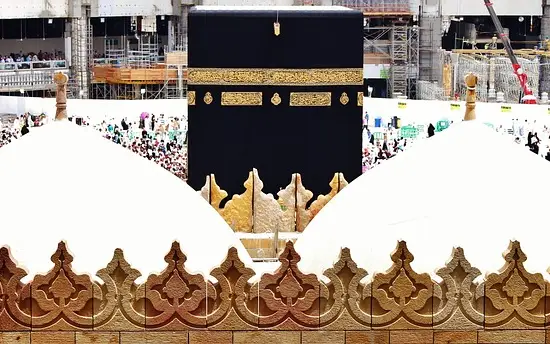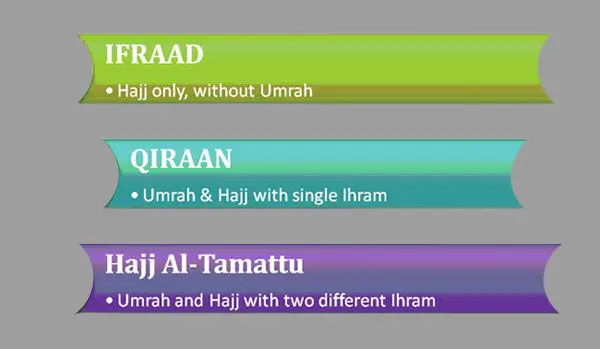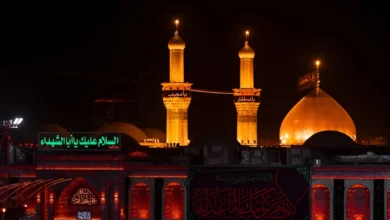
Hajj is a journey that Muslims worldwide need to do once during their whole lives. Hajj is done for five days, from the 8th through the 12th Dhul-Hijjah. As you begin your journey to perform Hajj, people must study the complete process. That’s why WikiTechLibrary offers you such a step-by-step explanation of how to do Hajj.
- 1. Before Arriving Makkah
- 2. Umrah After Arriving Makkah
- 2.1 Step 2: Tawaf
- 2.2 Step 3: Sa’i
- 3. 1st Day of Hajj
- 3.1 Step 4: Miqat
- 3.2 Step 5: Proceed to Mina
- 4. 2nd Day of Hajj
- 4.1 Step 6: Arafah
- 4.2 Step 7: Muzdalifah
- 5. 3rd Day of Hajj
- 6. 4th Day of Hajj
- 7. 5th Day of Hajj
Millions of Muslims globally journey to Makkah every year to make Hajj, the Muslim journey that followed the Prophet Muhammad’s activities. They follow his steps, study what he is doing, and do what he is doing.
Hajj is done between the 8th to 13th days of the twelfth Islamic calendar month, Dhul-Hijjah. Therefore, the fifth pillar of Islam is Hajj.
Hajj origin can be traced back to approximately 2000 BC when ALLAH directed Prophet Ibrahim (A.S.) away from his wife Hazrat Hajra and Hazrat Ismail (A.S.) along with the deserts of Makkah. Hazrat Hajra looked for water for her son between Marwa and Safa’s hills. When Hazrat Hajra returned to Hazrat Ismail, she observed that the baby stroked the ground with his heels, and a water fountain appeared from his feet. ALLAH eventually directed Prophet Ibrahim to establish a Kaaba and encourage individuals to perform Ibadah here.
The Kaaba, a stone building at the center of Mecca’s Grand Mosque, was established by the Prophet Abraham (A.S.) in ancient times.
Hajj is considered among Islam’s most meaningful activities, motivating Muslims to be gentle and honest with themselves and Allah. In Allah’s (SWT) sight, everyone seems equal, either wealthy or poor, irrespective of race. Therefore, it is more than a sacred duty.
The traveler has to be Muslim, mentally sound, and physically and mentally finish the pilgrimage. It takes five days to complete the great journey. Journey time with a day of mental preparation isn’t included in a five-day journey.
Hajj is a yearly spiritual practice conducted by Muslims at least once within their lifetimes to express their belief in and loyalty to Allah. Every year, the Saudi govt offers services and facilities to allow over 2 million visitors to perform their pleasure and peace prayers.
It’s an amazing moment for all preparing to travel, but it’s also a deeply spiritual, serious, and essential phase of our lives.
Travelers are fatigued after their journeys, yet they feel renewed and closest to God. As per the Prophet Muhammad (PBUH), individuals who do Hajj will return sin-free, precisely because they were as they were born.
Kinds of Hajj
There are three types of Hajj.
Hajj al-Ifrad
This type of Hajj relates to following the rituals and no need to slaughter animals or do Qurbani.
It includes just wearing Ihram for performing Hajj and removing it only on the day of sacrifice.
Mufrid is the term given to a traveler who does this type of Hajj.
Hajj al-Tamatt’u
Hajj al-Tamatt’u is the most popular type of Hajj, and Prophet Muhammed (PBUH) recommended his followers follow. People from different nations usually perform Hajj al-Tamatt’u in Saudi Arabia.
It relates to doing Umrah rituals throughout the Hajj season and then finishing the Hajj procedures between the 8th and 13th days of Dhu al-Hijjah.
Muttamatti is the word for a traveler who does this type of Hajj. It required the sacrifice of sacrificing animals.
Hajj al-Qiran
In Qiran, one should conform to the Ihram rules. It relates to wearing the Ihram for Hajj and Umrah and not having it in before the day during sacrifices in Mina.
This type requires a sacrificed animal to fulfill the rituals. Qaarin is the word for a traveler who does this type of Hajj.

Step-by-step guide on how Muslims perform Hajj
It could be done in multiple ways, and there are several colleges of Islamic thought with their own set of academic differences.
Before Arriving Makkah
Step 1: Making Intention (Niyah)
It’s important to keep your Niyah in your heart before arriving in Makkah to perform Hajj.
The procedure that Muslims have to do is explained below. These measures are essential and are regarded as required before doing Hajj.
- Do ablutions (Having to clean the body such that Muslims get the physical cleanliness of the body. This procedure involves certain necessary and other activities).
- Do Ghusl.
- Use fragrance, trim the bread & head.
- Clipp of the toenails & fingers.
- Trim of the mustache
- Shaving off the hairs of the body.
- Wear Ihram.
- Perform two Salah al-Ihram Rakats.
- Pronunciation Niyyah as Muslims reach the Miqat.
- Reciting Talbiyah. As you’ve already reached the sacred border of the Khana e Kabba after Miqat.
- This recital of Talbiyah must be maintained until the beginning of Tawaf.
- Then onto the next step of the journey to Mecca. It is regarded as the next phase of performing Umrah.
When you get to Makkah’s holy Masjid al-Haram, you will be ready to start the most intense spiritual pilgrimage of your life.
Following the Holy Prophet’s (P.B.U.H) Sunnah, it is necessary to follow each activity. In reality, following all procedures in the Holy Prophet’s (P.B.U.H) precise order is also important.
Umrah After Arriving Makkah
Once you reach Makkah, you would do Umrah, which contains Tawaf and Sa’i. Umrah offers Muslims an opportunity to refresh their beliefs, receive forgiveness, and pray for the requirements.
Step 2: Tawaf
Tawaf is an important journey ritual, and it comprises walking in anti-clockwise rounds around the Kaaba Shareef. A Tawaf shall consist of seven rounds, each starting, and finishing at the black stone.
You could perform optional prayers in addition to the Tawaf to praise Allah (SWT) for your arrival and to start this remarkable spiritual journey.
Step 3: Sa’i
Once you have completed Tawaf, you will complete Sa’i, which requires walking and sprinting between Safa and Marwa’s two mountains. Then, you will begin the Sa’i on Safa and go toward Marwa until you reach the green sign. When you have done seven rounds around Safa and Marwa, the Sa’i is completed.
Men will also have their hair cut or shaven following Sa’i, and women will also have their hair clipped to the point of their fingertips. The Umrah is now done, now you are authorized to leave Ihram even before the 8th of Dhul Hijjah.

1st Day of Hajj
Tarwiyah Day (8th Dhul Hijjah)
After the Prayer of Magrib of the seventh Dhul-Hijjah, the 8th of Dhul-Hijjah starts. In those late-night times, focus on completing all Hajj duties. Pilgrims don the Ihram and announce their Niyah to complete the pilgrimage.
Men offer two Rakats of Nafal for Ihram at the Haram Sharif. They are not allowed to cover their head after this step.
Step 4: Miqat
When entering the outside limit of Mecca, referred to as Miqat, the first step of Hajj is to enter Ihram, a traveler’s holy state. Before they would reach Makkah, they must travel by 5 Mawaqeet.
Allah Almighty said that whoever desires to do Hajj or Umrah at His glorious House must reach the state of Ihram from specified regions in which he is not permitted to travel without Ihram.
Before departing for Makkah, they shower and put on the Ihram, which includes wearing simple garments – two unstitched garments for males or loose-fitting clothes for women and make the niyyah complete the Hajj.
They start to make Tasbih:
لَبَّيْكَ اللَّهُمَّ لَبَّيْكَ، لَبَّيْكَ لاَ شَرِيْكَ لَكَ لَبَّيْكَ، إِنَّ الْحَمْدَ وَالنِّعْمَةَ لَكَ وَالْمُلْكَ لاَشَرِيْكَ لَكَ
“Here I am, O Allah, here I am, here I am. You have no partner; here I am. Verily all praise and blessings are Yours and all sovereignty. You have no partner.”
Step 5: Proceed to Mina
The travelers then move out in big groups from Mecca to the massive shelter of Mina, whether on the walk or by bus or auto. It’s an 8-km journey. They would camp in Mina for the complete day. There are no important rituals done on the first night, so pilgrims spent their time praying.
You have to arrange the camp when you reach Mina. You will perform dhuhr, asr, maghrib, isha, and Fajr there, decreasing your 4 unit prayer to 2 sections each, as specified by the Quran.
Stay the night worshiping Allah (SWT), reading the Qur’an, and preparing ready for the next day. It’s a rare night for religious recollection and dedication.
2nd Day of Hajj
Day of Arafah (9th Dhul Hijjah)
The second day begins on the 9th of Dhul Hijjah.
Step 6: Arafah
Arafat Day is one of the most significant moments in the Islamic calendar, not only for Hajj. The final speech of Prophet Muhammad was given on Mount Mercy in Arafat. People spent the day afterward journeying 14.4 km from Mina.
People spent this time chanting Talbiyah, praying Darud Sharif, and saying all the Dua’s in Arabic and the local language. It is preferred to conduct Waquf while standing; however, sitting is equally acceptable.
People proceed to distant Mount Arafat on the 2nd day of Hajj. People give Dhuhr and Asr and stay there till the sun sets and pray for His mercy.
The mufti of Masjid-e-Namrah leads combined and shortened Zuhr and Asr prayer at Zuhr hour with one adhan but distinct iqamahs. Most Muslims throughout the globe choose to fast that day.
After sunset, travelers go 9 km north of Arafat to Muzdalifah, wherever they stay the night.
Step 7: Muzdalifah
After sunset, you will leave Arafah and proceed to Muzdalifah, the wide flat area between Mina and Arafat. Once you reach Muzdalifah, perform your Salah of Maghrib and Isha sequentially, limiting the Isha salah to two Rakat. Many people gather stones here for tomorrow’s rites, then leave just before sunrise.
It is a lovely night to thank Allah, read Darud Sharif, read the Quran, recite Talbiyah, and be sincerely satisfied. However, you should instead pray or sleep for the nighttime. The Prophet (SAW) rested till just before Fajr rather than engaging in nighttime worship as he regularly did.
You must also select stones when at Muzdalifah to perform Rami [the devil’s stoning] for the next 3 days. The rocks could be approximately the same size.
You have to start picking up 21 stones but as a preventive measure, raise the total to 70. It would help if you missed the mark or saw any stones drop from your hands as you go through the procedure of throwing the pebbles at the Jamarat. Stones may be found practically everywhere in Mina. So whenever the sun is ready to rise, begin your journey to Mina.
3rd Day of Hajj
1st day of Eid (10th Dhul Hijjah)
You would leave Muzdalifah after completing Fajr salah and travel to Mina. Ensure to perform the Talbiyah. The day will be called Yawm-ul-Hajj, or the Day of Tribute, which happens on the 10th of Dhul Hijjah.
Step 8: The Rami
At sunrise, people travel to Mina to engage in a practice that simulates stoning the devil. It is the largest and most dangerous day of the Hajj for all travelers when millions worldwide throw stones at the pillars.
Rami is the practice of hurling stones at the Jamarat. Then, dozens of people gathered on the Jamarat Bridge, which contains the three devil-like pillars, to re-enact the events.
Rami’s procedure was a depiction of Ibrahim’s (AS) activities when he was commanded to kill his son, Ismail (AS), following Allah’s command (SWT) (SWT). The devil attempted to stop Him, but They threw stones at the devil.
People throw seven smaller pebbles at the Jamrat Al-Aqabah, a remarkable marble monument.
When you get to Jamarat, proceed to Jamarat al-Aqaba, the huge pillar, and toss the first seven stones there. Each time you throw the rocks, recite Takbir اللهُ أَكْبَرُ ( Allah is The Greatest).
Step 9: Animal Sacrifice (Qurbani)
On the 10th, 11th, or 12th day, Travelers sacrificed animals anywhere at the time. Travelers must sacrifice a sheep, goat, cow, or camel individually or pay for it to be executed on their behalf.
This ritual commemorates Prophet Ibrahim’s willingness to give up his child before being a replacement for a lamb, and it shows the followers’ trust in God.
It is proper to provide an animal sacrifice to God following the stoned process. Each traveler used to do this separately, but currently, it is far more common for travelers to purchase a sacrifice certificate.
Others will then proceed to Mecca to do Tawaf and Sa’ee, including seven times around the Kaaba and walking across Safa and Marwa’s mountains.
Step 10: Halq
Travelers cut or shaved their hair (men only) and removed their Ihram garments at this phase. It is recommended to cut one’s hair like the Prophet Muhammad (SAW) did. Women cut their hair to a fingertip’s short.
Step 11: Tawaf-e-Ziarat
After completing the Hajj rituals, you can now proceed to Makkah to perform Tawaf al-ifadha and Sa’i.
The Tawaf al-ifada and Sa’i are required. Both should be done just after Rami, sacrifice, and head clipping, as per the Sunnah. Its procedure is similar to that of Tawaf of Umrah.
It can be done immediately, day or night, from the 10th of Zil Hijjah to the 12th of Zil Hijjah.
4th Day of Hajj
2nd day of Eid (11th Dhul Hijjah)
You will get your 21 stones prepared on the 11th of Dhul Hijjah at noon.
Step 12: Rami of Jamarat
If someone chooses to leave Mina, they must throw the stones on the 12th day and do it before sunset. If the sun goes down before he goes, he will have to remain in Mina for the 3rd night.
Muslims return to Mina for three nights and start hurling pebbles on each 3 Jamarat. Rami generally is available in the evenings or before bedtime.
Travelers will now spend the next 2 to 3 days in Mina, finishing their traveler’s most challenging phase.
Step 13: Supplicate, Zikr and Ibadah
Thank Allah and say Duas in Arabic or genuflect in your language with your extended hand and face Qibla. You will be asking Allah anything you desire as long as you do not make any mistakes.
5th Day of Hajj
3rd day of Eid (12th Dhul Hijjah)
The Hajj fulfilled on the 12th Dhul Hijjah, the last day of the Hajj.
Step 14: Rami of Jamarat
On the fifth day, travelers throw seven pebbles on pillars again after Zawal. Begin with Jamarah al-Ula, then Jamarah al-Wusta, and lastly Jamarah al-Aqaba.
You have to rock each with seven stones in a line.
The travelers then spent the following 2 to 3 days in Mina worshiping and worshiping Allah.
Step 15: Final chance for Tawaf-e-Ziarat
You have the option of going to Makkah at sunset following today’s Rami. However, if you cannot perform Tawaf-e-Ziarah previously, you must do it before Maghrib.
Travelers must do the Tawaf and Sa’e rituals at the Kaaba and nearby mountains. The rituals are done similarly in the Umrah. However, it is actively urged to be done just after the stoned, sacrificial, and hair-cutting procedures.
Step 16: Tawaf al-Wida
The departure of Tawaf is the last ritual we perform while leaving Makkah. It is wajib and should be performed to leave Haram’s borders. In Islam, it is not acceptable to skip this Tawaf until there is a justifiable excuse.
You will finish 7 Tawaf laps with this Tawaf. Afterward, offers two Rakats of salah and drinking water (zam zam). After Tawaf, there is just no Sa’i or head-shaving or cutting.
Conclusion
Before going home, most travelers visited Medina, Islam’s 2nd holy city, where the Prophet Muhammad (P.B.U.H.) and his best friends are interred. However, visiting Medina is not included in the journey.
Mature Muslims who have the monetary resources must do Hajj at least once in a lifetime to show their belief and loyalty to Almighty Allah. Therefore, Muslims should understand how to follow Hajj procedures step by step.
WikiTechLibrary offers you detailed and easy step-by-step instructions to conduct Hajj so that you can understand it before you travel on this religious pilgrimage. We believe this information will help you a lot in completing Hajj.






